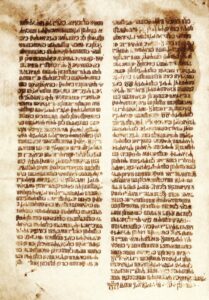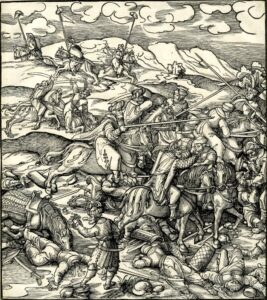
The End of Dynasties
Royalty dictates that every dynasty and Kingdom is eternal, until history dictates that the dynasty abruptly ends and the Kingdom is shattered. Often the end is peaceful, with one generation failing to produce an heir, and another family stepping in to take leadership and divide up the territory. Sometimes the end is violent, on the field of battle, in an assassination, or a bloody coup. But occasionally, the head of a dynasty will win all his battles, survive all of his assassination attempts, and still end up losing. The Balkans is the graveyard of dynasties and kingdoms, and is rife with all kinds of ends.
The Battle of Krbava Field, on 9 September 1493 marked the end of the Croatian Kingdom at the hands of the Ottoman Empire and the end of the short-lived dynasty of the Kingdom’s leader, Ban of Croatia Emerik Derenčin. Derenčin’s reign was particularly short – he was appointed in 1493, captured after being defeated during the Battle of Krbava, and died shortly afterwards in captivity. His son Pavao, was killed during the fighting. Derenčin’s reign was also filled with conflict. Prior to being killed by the Ottomans, he fought against the Frankopans for leadership of the Kingdom of Croatia, a civil war that was only interrupted by the arrival of the Ottoman Army.

The Frankopans fared little better after the battle. When the Ottomans invaded, they allied their troops to their former enemy, Derenčin, and were dragged down with him. Their military leader, Nikola VI Frankopan was captured, but ransomed in humiliation. Other Frankopan nobles, including Ivan Frankopan Cetinski were killed outright. The defeat ended their claim on the throne of the Kingdom. The Ban position skipped over the Frankopans entirely, and passed to Ladislaus Kaninzai, former Voivode of Transylvania.
During the same timeframe as the battle, the dynasty of the House of Kotromanic, which had been the Bosnian Royal Family from 1477 to the Ottoman invasion of Bosnia, ended as well. One of the main participants of the battle was the last known member of the House of Kotromanic, formerly Prince Sigismund Tomašević, son of Bosnian King Thomas and Queen Catherine. However, at the time of the Battle of Krbava Field, Sigismund was already known as Ishak Bey Kralogu, having converted from the Roman Catholic Faith of the Bosnian Kingdom to the Islamic Faith of its conquerors. Ironically, although Sigismund was a well respected Ottoman Statesman and military commander, having been both victorious and defeated on the Ottoman side in the past, his conversion to Islam was what kept his dynasty from continuing in the Balkans under the Ottomans. The Ottoman’s decided the first post-occupation Kings of Bosnia should be Christian, so they appointed Matija Sabančić, also from the House of Kotromanic as King, passing legitimate heir Sigismund over for the position. Sabančić died before the Battle of Krbava, leaving Sigismund the last of the Kotromanic dynasty. Ironically, Sabančić’s replacement, Bosnian King Matija Vojsalic, was the last of his dynasty, the House of Hrvatinic. Vojsalic was removed by the Sultanate in 1476 for conspiring with the Christian King of Hungary against the Ottoman occupation.

The Battle of Krbava Field was a relatively simple affair. Two years earlier, in September 1491, the same Frankopan leaders who commanded the Croatian troops in 1493 sounded defeated an Ottoman army in almost exactly the same location at the Battle of Vrpile Gulch. In the Battle of Vrpile Gulch, the Frankopan-led force ambushed the Ottomans as they were moving through a narrow gulch, massacring 1,500 Ottoman soldiers, taking 1,500 prisoners, and freeing 18,000 Balkan captives who were being marched into slavery in the Ottoman Empire. In 1493, Ivan Frankopan Cetinski wanted to duplicate the tactic. However, Derenčin overruled Cetinski and the Battle would be held in Krbava Field.
The Ottomans started the Battle of Krbava Field with a morning frontal attack and quickly retreated, drawing the Croatian troops off of the defensive slopes into the open field. Immediately afterwards, concealed Ottoman cavalry burst from their hiding places and ambushed the slow moving Croatian infantry. The battle was a total rout for the Croatians by early afternoon. The defeat was total, and only a few Croatian soldiers were able to seek shelter in the fortified town of Udbina nearby. After celebrating their victory, the Ottomans temporarily left, secure in the fact that their Bosnian possessions would not be threatened by the Kingdom of Croatia and the Ottoman Army could return at their leisure. The Croatian losses were so heavy that the area became known as the Krvavo Polje (Field of Blood).
The Battle of Krbava Field started the Hundred-Years War, which would end in 1593 and lead to the slow motion collapse of the Croatian Kingdom. Ottoman raids would depopulate the countryside, forcing hungry peasants into the fortified cities, which could ill afford the expense of more people with less tax income from the countryside. Eventually the Croatian peasants would move into a safer part of Northwest Croatia, away from the Ottoman border and constant attacks, onto the coast, and onto the islands. The Ottoman advances ended in 1593 at the Battle of Sisak, but parts of Croatia remained occupied through the end of the 17th century, until Croatia itself was absorbed into the Habsburg Monarchy of Austro-Hungary.
- August 26, 2020
- Croatia
